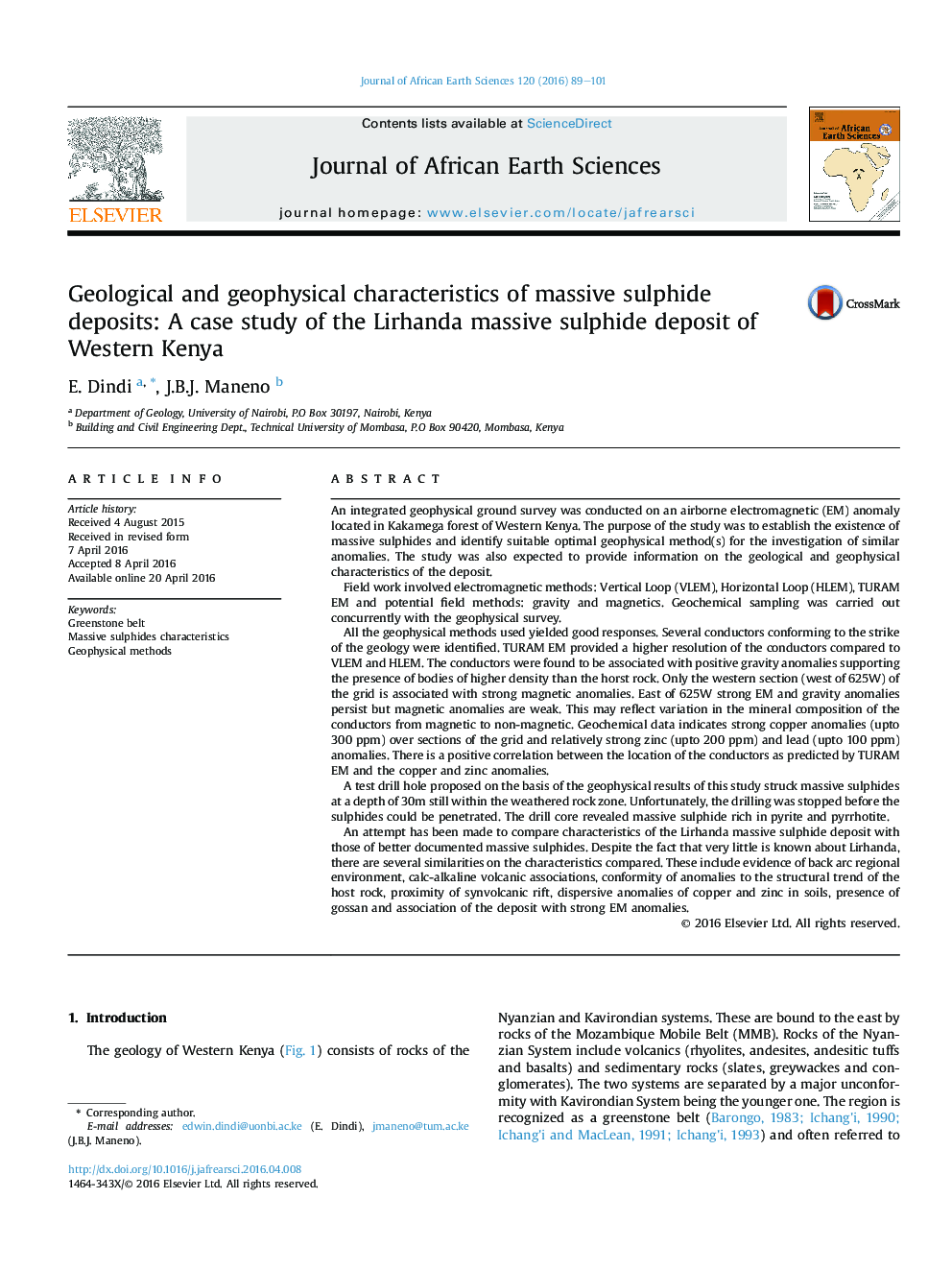| کد مقاله | کد نشریه | سال انتشار | مقاله انگلیسی | نسخه تمام متن |
|---|---|---|---|---|
| 4728215 | 1640188 | 2016 | 13 صفحه PDF | دانلود رایگان |
• The deposit showed good response to all the geophysical methods used (VLEM, HLEM, TURAM EM, gravity and magnetics).
• There is good correlation on the ground between geophysical anomalies and those from the geochemical soil sampling.
• Good response to gravity method provided confidence that it was a massive sulphide deposit.
• Test drilling on the basis of recommendations from this study encountered massive sulphides.
• Comparison with other massive sulphide deposits show that the deposit share a number of characteristics with them.
An integrated geophysical ground survey was conducted on an airborne electromagnetic (EM) anomaly located in Kakamega forest of Western Kenya. The purpose of the study was to establish the existence of massive sulphides and identify suitable optimal geophysical method(s) for the investigation of similar anomalies. The study was also expected to provide information on the geological and geophysical characteristics of the deposit.Field work involved electromagnetic methods: Vertical Loop (VLEM), Horizontal Loop (HLEM), TURAM EM and potential field methods: gravity and magnetics. Geochemical sampling was carried out concurrently with the geophysical survey.All the geophysical methods used yielded good responses. Several conductors conforming to the strike of the geology were identified. TURAM EM provided a higher resolution of the conductors compared to VLEM and HLEM. The conductors were found to be associated with positive gravity anomalies supporting the presence of bodies of higher density than the horst rock. Only the western section (west of 625W) of the grid is associated with strong magnetic anomalies. East of 625W strong EM and gravity anomalies persist but magnetic anomalies are weak. This may reflect variation in the mineral composition of the conductors from magnetic to non-magnetic. Geochemical data indicates strong copper anomalies (upto 300 ppm) over sections of the grid and relatively strong zinc (upto 200 ppm) and lead (upto 100 ppm) anomalies. There is a positive correlation between the location of the conductors as predicted by TURAM EM and the copper and zinc anomalies.A test drill hole proposed on the basis of the geophysical results of this study struck massive sulphides at a depth of 30m still within the weathered rock zone. Unfortunately, the drilling was stopped before the sulphides could be penetrated. The drill core revealed massive sulphide rich in pyrite and pyrrhotite.An attempt has been made to compare characteristics of the Lirhanda massive sulphide deposit with those of better documented massive sulphides. Despite the fact that very little is known about Lirhanda, there are several similarities on the characteristics compared. These include evidence of back arc regional environment, calc-alkaline volcanic associations, conformity of anomalies to the structural trend of the host rock, proximity of synvolcanic rift, dispersive anomalies of copper and zinc in soils, presence of gossan and association of the deposit with strong EM anomalies.
Journal: Journal of African Earth Sciences - Volume 120, August 2016, Pages 89–101
